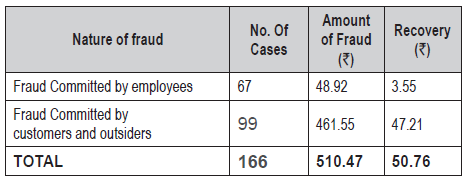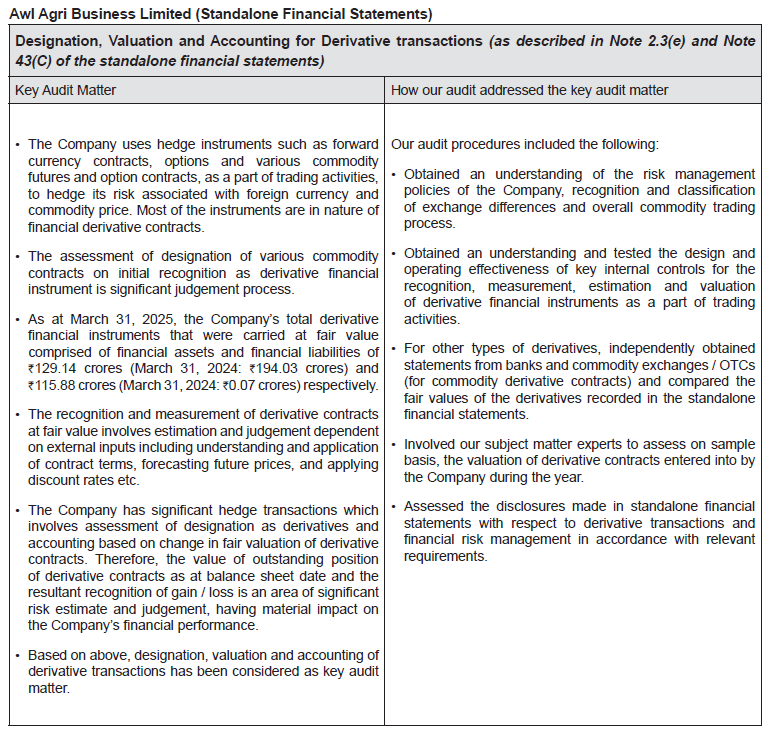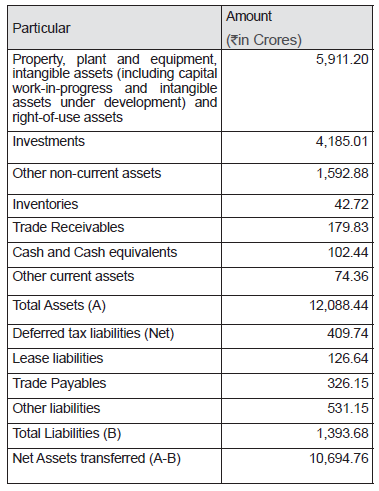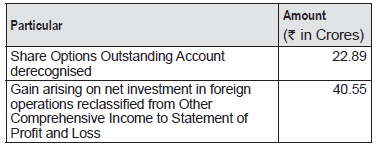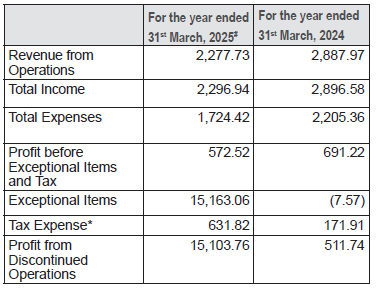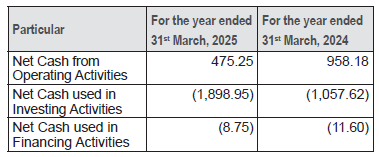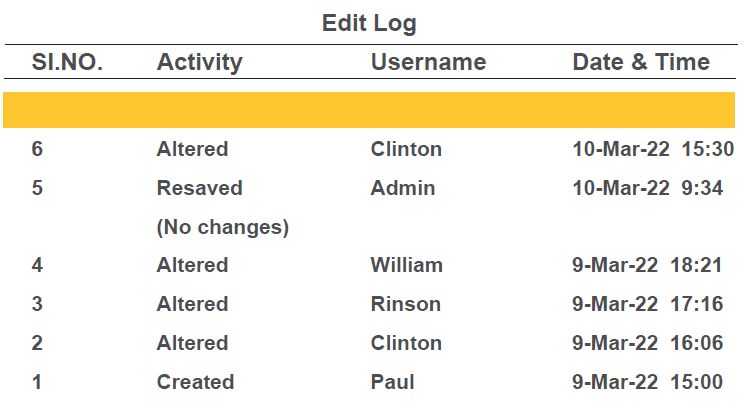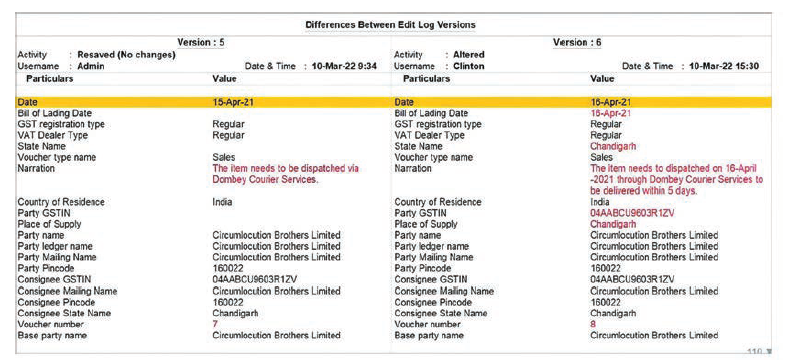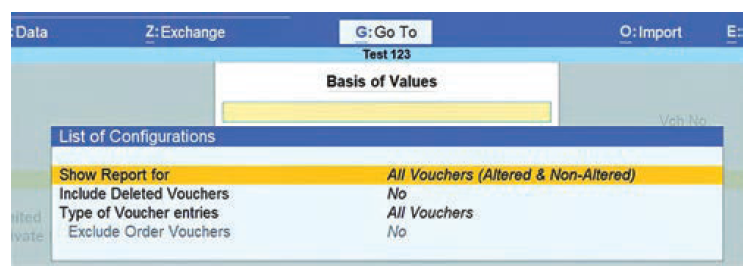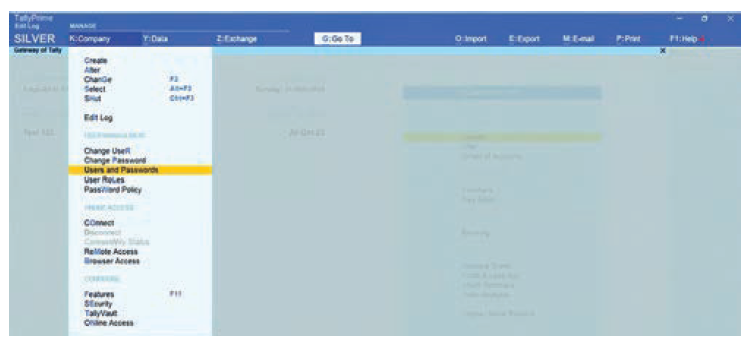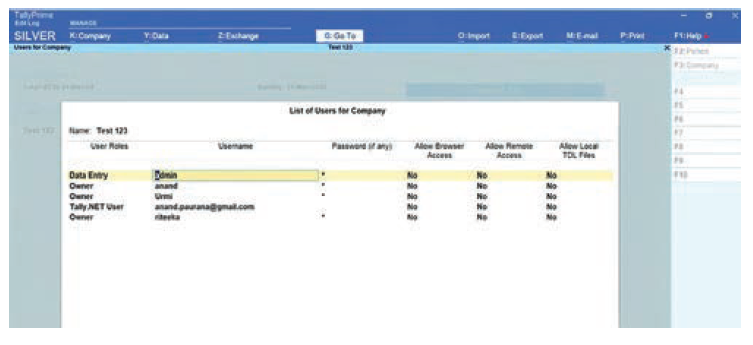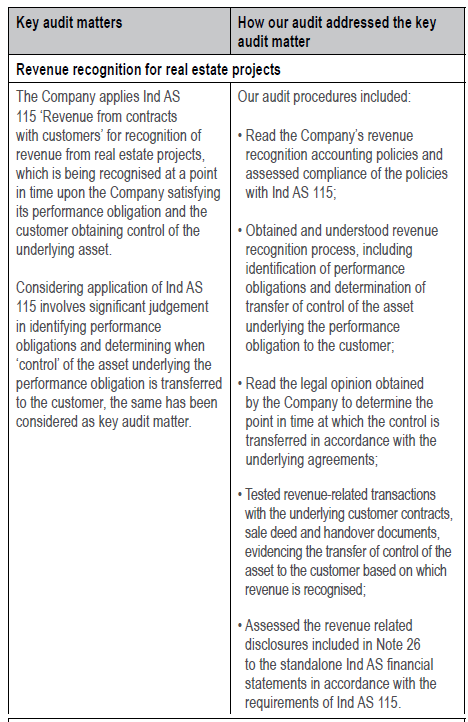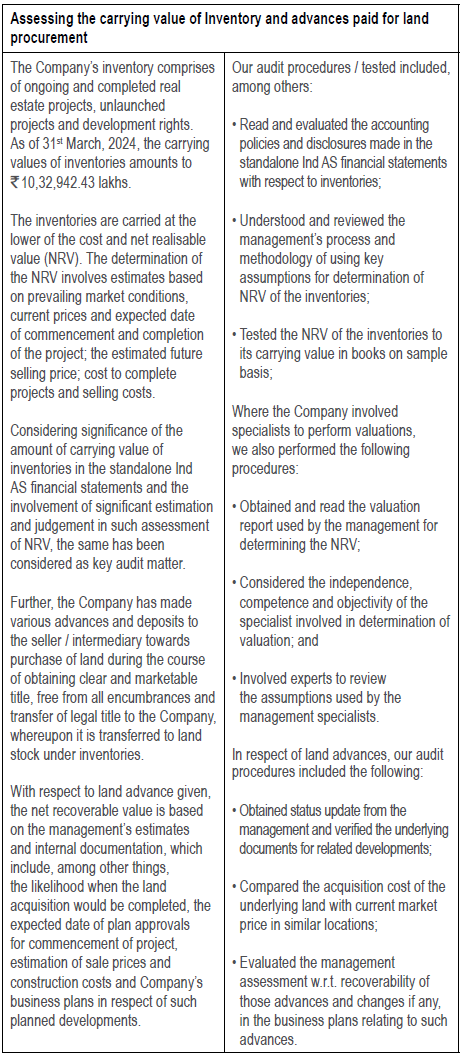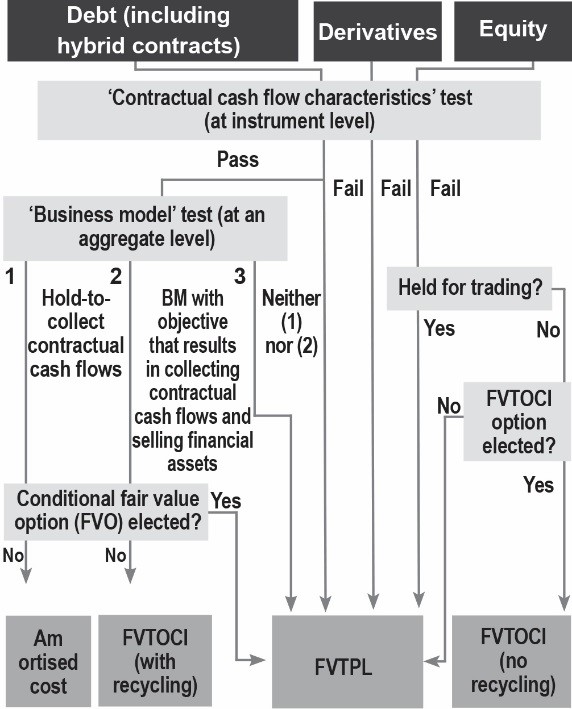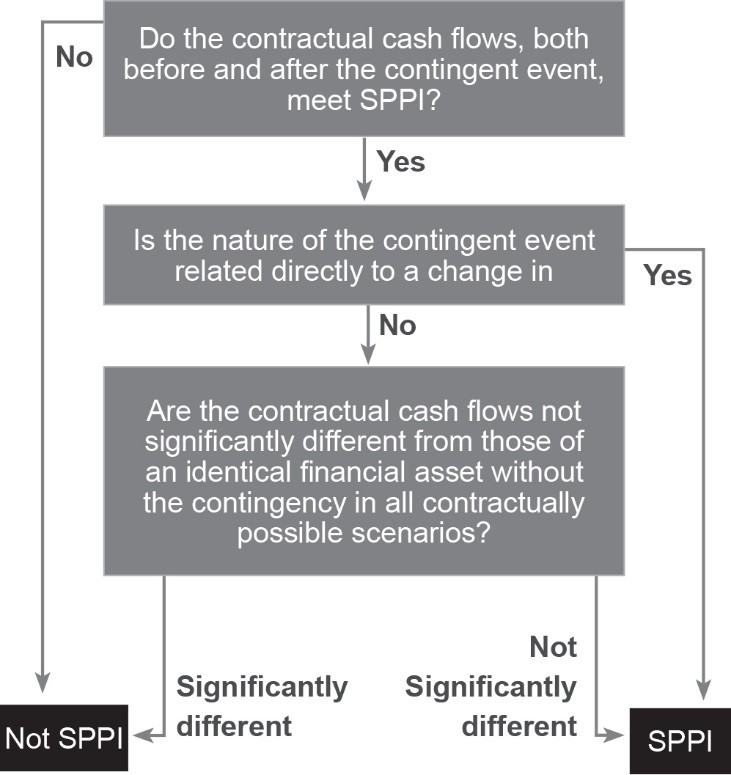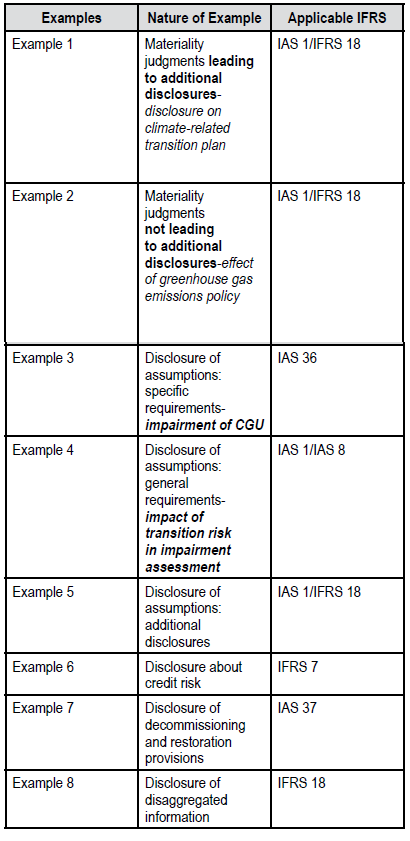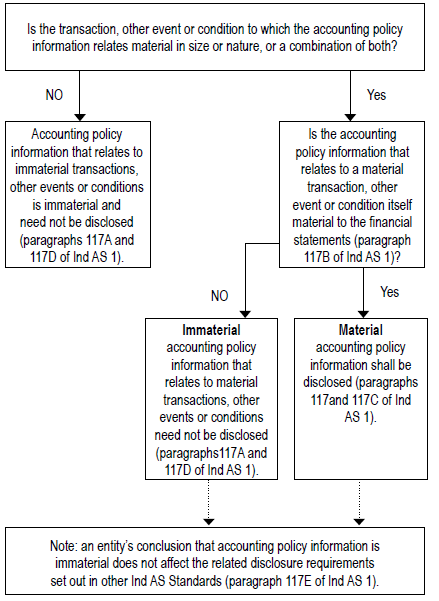COMPILER’S NOTE
Under Section 143(3)(i) of the Companies Act, 2013, an auditor of a company is required to state in his/her audit report whether the company has an adequate internal financial controls (IFC) system in place and the operating effectiveness of such controls. The Institute of Chartered Accountants of India (ICAI) has also issued a Guidance Note for the same.
Given below are excerpts of instances where the auditors have issued qualified reports for the financial year 2024-25 for deficiencies observed in different areas in the Internal Financial Controls.
Ola Electric Mobility Limited (from Consolidated Financial Statements)
REPORT ON THE INTERNAL FINANCIAL CONTROLS
Qualified Opinion:
In conjunction with our audit of the consolidated financial statements of Ola Electric Mobility Limited (formerly known as ‘Ola Electric Mobility Private Limited’) (hereinafter referred to as “the Holding Company”) as of and for the year ended 31 March 2025, we have audited the internal financial controls with reference to financial statements of the Holding Company and such companies incorporated in India under the Act which are its subsidiary companies, as of that date.
In our opinion, except for the possible effects of the material weakness described below in the Basis for Qualified Opinion section of our report on the achievement of the objectives of the control criteria in respect of one of the wholly owned subsidiary company, the Holding Company and such companies incorporated in India which are its subsidiary companies has maintained, in all material respects, adequate internal financial controls with reference to consolidated financial statements and such internal financial controls with reference to consolidated financial statements were operating effectively as of 31 March 2025, based on the internal financial controls with reference to financial statements criteria established by such companies considering the essential components of such internal controls stated in the Guidance Note on Audit of Internal Financial Controls Over Financial Reporting issued by the Institute of Chartered Accountants of India (the “Guidance Note”).
We have considered the material weakness identified and reported below in determining the nature, timing, and extent of audit tests applied in our audit of the consolidated financial statements of the Group as at 31 March 2025, and such material weakness does not affect our opinion on the consolidated financial statements.
Basis For Qualified Opinion:
According to the information and explanations given to us and based on our audit, the following material weakness has been identified as at 31 March 2025 in respect of one of the wholly owned subsidiary company:
- Such subsidiary company did not have an appropriate internal control system for physical verification of raw material and finished goods located at its Stores and State Distribution Centers which could potentially result in material misstatements in the Group’s inventories, Cost of materials consumed and Change in inventories of finished goods, stock-in-trade and work-in-progress account balances.
A ‘material weakness’ is a deficiency, or a combination of deficiencies, in internal financial control over financial reporting, such that there is a reasonable possibility that a material misstatement of the company’s annual or interim financial statements will not be prevented or detected on a timely basis.
Ventive Hospitality Limited (Standalone Financial Statements)
REPORT ON THE INTERNAL FINANCIAL CONTROLS
Qualified Opinion:
According to the information and explanations given to us and based on our audit, the following material weakness has been identified as at March 31, 2025:
The Company did not have appropriate Information Technology General Controls (ITGCs) in respect of application software used by the Company, related to managing program changes and managing access, which could potentially result in misstatements to the relevant account captions in the financial statements.
A ‘material weakness’ is a deficiency, or a combination of deficiencies, in internal financial control with reference to standalone financial statements, such that there is a reasonable possibility that a material misstatement of the company’s annual or interim financial statements will not be prevented or detected on a timely basis.
In our opinion, except for the possible effects of the material weakness described above on the achievement of the objectives of the control criteria, the Company has maintained, in all material respects, adequate internal financial controls with reference to these financial statements and such internal financial controls with reference to financial statements were operating effectively as of March 31, 2025, based on the internal control over financial reporting criteria established by the Company considering the essential components of internal control stated in the Guidance Note issued by the ICAI.
TCI Finance Limited (Standalone Financial Statements)
REPORT ON THE INTERNAL FINANCIAL CONTROLS
Qualified Opinion:
According to the information and explanations given to us and based on our audit, the following material weakness have been identified in the operating effectiveness of the Company’s internal financial controls over financial reporting as at March 31, 2025 in respect of financial statements closure and assessment of impairment loss or provision required in respect of investments or financial assets which could potentially result in misstatement in the financial statements.
A ‘material weakness’ is a deficiency, or a combination of deficiencies, in internal financial control over financial reporting, such that there is a reasonable possibility that a material misstatement of the Company’s annual or interim financial statements will not be prevented or detected on a timely basis.
In our opinion, the Company has, in all material respects, maintained adequate internal financial controls over financial reporting as of March 31, 2025, based on the internal control over financial reporting criteria established by the Company considering the essential components of internal control stated in the Guidance Note on Audit of Internal Financial Controls Over Financial Reporting issued by the Institute of Chartered Accountants of India, and except for the possible effects of the material weakness described above on the achievement of the objectives of the control criteria, the Company’s internal financial controls over financial reporting were operating effectively as of March 31, 2025.
Hindustan Construction Co. Limited (Standalone Financial Statements)
REPORT ON THE INTERNAL FINANCIAL CONTROLS
Qualified opinion:
According to the information and explanations given to us and based on our audit, the following material weaknesses have been identified in the operating effectiveness of the Company’s internal financial controls with reference to standalone Ind AS financial statements as at March 31, 2025:
a. The Company’s internal financial control system towards estimating the carrying value of its investment in subsidiary company, as explained in Note 32 to the standalone Ind AS financial statements were not operating effectively which could potentially lead material misstatement in the carrying values of investments and dues recoverable from such subsidiary and its consequential impact on the earnings, other equity and related disclosures in the standalone Ind AS financial statements.
b. The Company’s internal financial controls system with respect to assessing the recoverability of deferred tax assets, as explained in Note 9.5 to the standalone Ind AS financial statements, as per Ind AS 12 ‘Income Taxes’ were not operating effectively, which could potentially lead to a material misstatement in the carrying value of deferred tax assets and its consequential impact on the earnings, other equity and related disclosures in the standalone Ind AS financial statements.
A ‘material weakness’ is a deficiency, or a combination of deficiencies, in internal financial controls with reference to the standalone Ind AS financial statements, such that there is a reasonable possibility that a material misstatement of the company’s annual or interim Ind AS financial statements will not be prevented or detected on a timely basis.
In our opinion, the Company has, in all material respects, adequate internal financial controls with reference to the standalone Ind AS financial statements as at March 31, 2025, based on internal control with reference to the standalone Ind AS financial statements established by the Company considering the essential components of internal control stated in the Guidance Note issued by the ICAI, and except for the possible effects of the material weaknesses described above on the achievement of the objectives of the control criteria, the Company’s internal financial controls with reference to standalone Ind AS financial statements were operating effectively as at March 31, 2025.
We have considered the material weaknesses identified and reported above in determining the nature, timing, and extent of audit tests applied in our audit of the standalone Ind AS financial statements of the Company as at and for the year ended March 31, 2025, and these material weaknesses have affected our opinion on the standalone Ind AS financial statements of the Company, and we have issued a qualified opinion on the standalone Ind AS financial statements.
From notes to Financial Statements:
Note 32:
As at March 31, 2025, the Company has investments (including deemed investments) in its wholly owned subsidiary HCC Infrastructure Company Limited (‘HICL’) aggregating ₹1,294.33 crore (March 31, 2024: ₹1,294.45 crore) classified as non-current investment ₹1,159.48 crore (March 31, 2024: ₹1,294.45 crore) and current investment of ₹134.85 crore (March 31, 2024: Nil). While the consolidated net worth of HICL as at March 31, 2025 has been substantially eroded, the management has assessed the fair value of HICL based on a valuation report from an independent valuation expert. The valuation includes significant judgements and estimates in respect of future business plans, expected share of future revenues of subsidiaries sold and outcome of litigations for favourable arbitration awards in a step-down subsidiary. Accordingly, based on aforementioned valuation report and future business plan, the management believes that the recoverable amount of investment in HICL is higher than its carrying value.
Note 9.5:
Movement in components of deferred tax assets and deferred tax liabilities are as follows:
(Rupees in crores)
| Business loss / unabsorbed depreciation / MAT credit entitlements | Impairment allowance on receivables / other assets | Timing difference on tangible and intangible assets depreciation and amortisation | Section 35 Expenses | Expense allowable on payment basis | Others | Arbitration awards | Total | |
| As at April 1, 2023 | 2,100.17 | 9.69 | 35.07 | – | 166.98 | – | (1,569.98) | 741.93 |
| (Charged) / credited | ||||||||
| – to profit or loss | (131.75) | 6.52 | 6.19 | – | 69.00 | – | (78.80) | (128.8) |
| – to other comprehensive income | – | – | – | – | – | – | – | 0.00* |
| As at March 31, 2024 | 1,968.42 | 16.21 | 41.26 | – | 235.98 | (1,648.78) | 613.09 | |
| (Charged) / credited | ||||||||
| – to profit or loss (Refer note 9.6) | (867.56) | (3.40) | (12.85) | (2.35) | (18.33) | – | 483.63 | 483.63 |
| – to other comprehensive income | – | – | – | – | – | 1.39 | – | (420.9) |
| – to security premium | – | – | – | 11.28 | – | – | – | 11.28 |
| As at March 31, 2025 | 1,100.86 | 12.81 | 28.41 | 8.93 | 217.65 | 1.39 | (1,165.15) | 204.90 |
* Represents amount less than ₹1 lakh.
Fusion Finance Limited (Standalone Financial Statements)
REPORT ON INTERNAL FINANCIAL CONTROLS
Basis for Qualified Opinion
According to the information and explanations given to us and based on our audit, the following material weakness has been identified in the Company’s internal financial controls with reference to the financial statements as at March 31, 2025.
The Company has concluded that it was impracticable to evaluate and determine any amounts for retrospective recognition and measurement in those prior periods on account of expected credit loss allowance as explained in note 60 of the financial statements of the Company. As a result, we are unable to determine whether any adjustments were required for prior period(s) relating to the impairment charge recorded for the year ended March 31, 2025.
Because of the deficiency in financial closing and reporting process, in respect of information as aforesaid, we are unable to assess whether or not the current year’s figures are comparable to those of the previous year.
A ‘material weakness’ is a deficiency, or a combination of deficiencies, in internal financial control with reference to the financial statements, such that there is a reasonable possibility that a material misstatement of the company’s annual or interim financial statements will not be prevented or detected on a timely basis.
Qualified Opinion
In our opinion, to the best of our information and according to the explanations given to us, except for the possible effects of the material weakness described in the Basis for Qualified Opinion paragraph above on the achievement of the objectives of the control criteria, the Company has maintained, in all material respects, an adequate internal financial controls with reference to the financial statements and such internal financial controls with reference to the financial statements were operating effectively as at March 31, 2025, based on the criteria for internal financial control with reference to financial statements established by the Company considering the essential components of internal control stated in the Guidance Note on Audit of Internal Financial Controls Over Financial Reporting issued by the Institute of Chartered Accountants of India.
We have considered the material weakness identified and reported above in determining the nature, timing, and extent of audit tests applied in our audit of the financial statements of the Company for the year ended March 31, 2025, and the material weakness does not affect our opinion on the financial statements of the Company.
From Notes to Financial Statements:
Note 60:
During the year ended March 31, 2025, the Company recorded an allowance for Expected Credit Loss (“ECL”) of ₹1,864.91 crore, in respect of loans given, with a corresponding charge to the Statement of Profit and Loss, consequent to a significant increase in credit risk evidenced by slowing and delayed collections. In preparing this statement, the Company has not evaluated whether any of these allowances should have been recognized in any of the prior period presented because of limitations in objectively determining information relating to assumptions and circumstances as it existed in those prior periods. As a result, the Company has concluded that it was impracticable to evaluate and determine any amounts for retrospective recognition and measurement in those prior periods.
Kolte-Patil Developers Limited (Standalone Financial Statements)
INTERNAL FINANCIAL CONTROLS REPORT
Qualified Opinion:
According to the information and explanations given to us and based on our audit, the following material weaknesses have been identified as at March 31, 2025:
- The Company’s information technology general controls with respect to manage change process were not operating effectively which could potentially result in material misstatement in the standalone financial statements.
- The Company’s internal financial controls over financial statements closure process were not operating effectively which could potentially result in material misstatement in the standalone financial statements.
A ‘material weakness’ is a deficiency, or a combination of deficiencies, in internal financial control with reference to standalone financial statements, such that there is a reasonable possibility that a material misstatement of the company’s annual or interim financial statements will not be prevented or detected on a timely basis.
In our opinion, the Company has maintained, in all material respects, adequate internal financial controls with reference to the standalone financial statements based on the internal control over financial reporting criteria established by the Company considering the essential components of internal control stated in the Guidance Note issued by the ICAI and except for the possible effects of the material weaknesses described above on the achievement of the objectives of the control criteria, such internal financial controls with reference to standalone financial statements were operating effectively as at March 31, 2025.
Reliance Communications Limited (Standalone Financial Statements)
REPORT ON INTERNAL FINANCIAL CONTROLS
Basis for Qualified Opinion
According to the information and explanations given to us and based on our audit, the following material weaknesses and deficiencies has been identified in the operating effectiveness of the Company’s internal financial controls with reference to standalone financial statements as at March 31, 2025:
- The Company’s internal process with regard to confirmation and reconciliation of Balances of trade receivables, trade payables & other liabilities and loan & advances which are not providing for adjustments, which are required to be made to the carrying values of such assets and liabilities. (Read with Note no. 2.31) (not reproduced as the note is on Going Concern).
- The Company’s internal control process in respect of closure of outstanding entries in Bank Reconciliation Statements which are pending to be reconciled.
- In respect of delays in payment of certain statutory dues and filing of certain statutory returns during the year with the respective authorities.
- In respect of transactions carried out by Director of foreign subsidiary company without obtaining the adequate approvals from the Management of the Company (Refer Note 2.60).
- The Company’s internal financial control with regard to the compliance with the applicable Indian Accounting Standards and evaluation of carrying values of assets and liabilities and other matters, as fully explained in Basis for Qualified Opinion paragraph of our main report, resulting in the Company not providing for adjustments, which are required to be made, to the standalone financial statements.
A ‘material weakness’ is a deficiency, or a combination of deficiencies, in internal financial control with
reference to standalone financial statements, such that there is a reasonable possibility that a material misstatement of the Company’s standalone financial statements will not be prevented or detected on a timely basis.
Qualified Opinion
In our opinion and to the best of our information and according to the explanations given to us, except for the effects / possible effects of the material weaknesses described above under Basis for Qualified Opinion paragraph on the achievement of the objectives of the control criteria, the Company has, in all material respects an adequate internal financial controls with reference to standalone financial statements and such internal financial controls were operating effectively as at March 31, 2025, based on the internal financial control with reference to the standalone financial statements criteria established by the Company considering the essential components of internal control stated in the Guidance Note.
We have considered material weakness identified and reported above in determining the nature, timing, and extent of audit tests applied in our audit of the standalone financial statements of the Company for the year ended March 31, 2025 and these material weaknesses affect our opinion on standalone financial statements of the Company for the year ended March 31, 2025 [our audit report dated May 27, 2025, which expressed an Qualified Opinion on those standalone financial statements of the Company].












